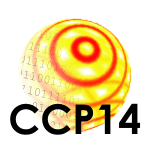
Collaborative Computational Project Number 14
(CCP14)
For Single Crystal and Powder Diffraction
(Freely Available Crystallographic Software for Students and Academia)
 |
Collaborative Computational Project Number 14 (CCP14) For Single Crystal and Powder Diffraction (Freely Available Crystallographic Software for Students and Academia) |
| Home | About CCP14 | Downloads | Contact CCP14 |
31st May 2001 Update - Commercially available Spray Drying kit
|
|
Via
Clay Minerals List of the
Clay Minerals Society
Date: Fri, 11 Dec 1998 14:21:21 -0000 Reply-To: s.hillier@mluri.sari.ac.uk Sender: CLYMIN-L >CLYMIN-L@VM.CC.PURDUE.EDU< From: Stephen Hillier >mi418@MLURI.SARI.AC.UK< Organization: mluri Subject: spray drying To: Multiple recipients of list CLYMIN-L >CLYMIN-L@VM.CC.PURDUE.EDU< Following, the recent postings on quantitative clay mineral analysis to the CMS list server I have received a number of enquiries about spray drying. Therefore, it seemed appropriate to send some general information back to the list. Basically, we have developed a relatively simple and efficient way to prepare a random powder sample for XRD by spray drying. The technique uses a similar but smaller oven to that described by (Smith et al 1979) but the sample is sprayed from a hand held air-brush and recovered from a sheet of paper. The use of the air-brush and the paper both contribute to a relatively good sample recovery of typically 80% of what goes in. Poor sample recovery probably being the main reason why this technique has not been widely adopted in the past. At MLURI we now routinely prepare all our random powder samples by spray drying including soils, sediments, sandstones, drilling muds, bentonites etc, as well as clay fractions separated from them. A competent operator can process about 30 samples a day. The method and equipment is described in a paper soon to be published (next issue I think) in Clay Minerals. The result of spray drying is an extremely fluid and easily handled powder consisting of thousands of spherical agglomerates of the sample components. The arrangement of any component within the spherical agglomerates and of the agglomerates themselves ensuring that preferred orientation is eliminated from the powder sample presented to the X-ray beam (Smith et al. 1979). Although there are sophisticated ways of dealing with the effects of preferred orientation, it's much better to eliminate it in the first place. Thereafter, you can apply any method you like to process your diffraction data for quantitative analysis, computerised or otherwise. At present we have built two spray dryers and are in the process of supplying another as a complete kit (air-brush, oven, paper, manual) to Bruker's application lab (formerly Siemens) in Germany. As a result we are considering the possibility of producing these kits to order through the commercial arm of the Macaulay Institute, MRCS. If anyone is interested in this possibility if they contact me directly, I can let them know the details. Smith S.T., Snyder R.L. and Brownell W. E. (1979) Minimisation of preferred orientation in powders by spray-drying. Advances in X-ray Analysis 22, 77-87. Steve Hillier Dr Stephen Hillier Soil Science Group Macaulay Land Use Research Institute Craigiebuckler, Aberdeen, AB9 2QJ, UK. Tel/Fax: +44 1224 318611/311556E-mail: s.hillier@mluri.sari.ac.uk |
|
Via
Clay Minerals List of the
Clay Minerals Society
From: "Lou Solebello" [microls1297@mindspring.com] To: [clayminerals-l@purdue.edu] Subject: Re: Random Mounts Date: Wed, 1 Nov 2000 06:15:24 -0800 A less expensive way to get "spray dried mounts" is to buy a hand held mister or spray bottle. Most garden shops have them. Make up a 2% sodium hexametaphosphate solution and put enough of your sample in to make it ever so slightly cloudy. Disperse it in a blender with short pulses for about 1 minute. You should get truly random particles when you spray it onto an SEM stub. Works great for me. Lou Solebello ----- Original Message ----- From: Dennis D. Eberl <ddeberl@usgs.gov> To: <clayminerals-l@purdue.edu> Sent: Tuesday, October 31, 2000 2:08 PM Subject: Re: Random Mounts > Nick- > A really good way to get random mounts is to spray dry your sample. > A good spray drier is sold by the McCaulay Institute: contact Steve > Hillier: S.Hillier@mluri.sari.ac.uk . With this method, you end up with > spherical particles and completely random mounts. > Dennis Eberl > > > > >Hi all, > > Having now satisfied myself with prepping oriented mounts (I > >resorted to the knife-spreading method - just cannot get a good pattern > >off the Milipore method), I am now onto random mounts to try to resolve > >polytypes and work with hkl reflections. The Moore and Reynolds > >recommended method is to pack a container with dry clay against a frosted > >glass. Now I have tried many iterations of this and with all due respect, > >decided I would have to see it to believe it - i.e. doesn't work for me. > > So, I am now working with the high-tech method of pressing a gram > >or two of dried <2um seperate onto a frosted glass (yes, I am aware this > >will cause internal strain). I have managed to get a 060 illite-type peak > >at ~61.5(shifted a bit - this is all I/S), and eyeballing the pattern here > >it has a peak intensity of 172 counts over background. The FWHM is ~0.3 > >2theta and the machine conditions are 40kV/30mA and 0.01/s step time. Does > >this sound reasonable? > > Nick > > > >_____________________________ > >Nicholas W. Hayman \ > >Dept. of Geological Sci., U.W.\ http://www.geology.washington.edu/~hayman > >Box 351310, Seattle WA 98195 \_________________________________________ > > > > > >Sender: "N. Hayman" <nickh@u.washington.edu> > >Listserver name: clayminerals-l > > > Dr. Dennis D. Eberl > Project Chief > U. S. Geological Survey > 3215 Marine St. > Boulder, CO 80303-1066 > USA > phone: 303-541-3028 > fax: 303-447-2505 > ddeberl@usgs.gov |